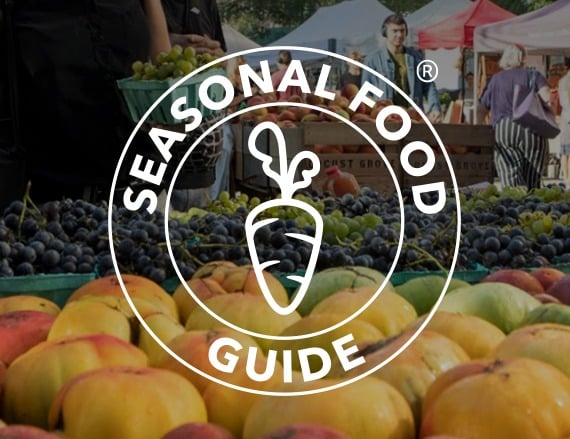Real Food Encyclopedia | Apricot
Apricots (Prunus armeniaca) are small, pitted fruit, about the size of a golf ball. They are similar in appearance to a small peach and have a very light fuzz on the skin. They range in color from pale orange to deep saffron, often with a tinge of pink or red blush.
As delicate fruits that are highly susceptible to the whims of Mother Nature, their fleetingness is perhaps best summed up by the Arabic saying bukra fil mish-mish, which translates to “when the apricots are in season” — used when there is little chance of something happening.
Did you know?
- Apricots are the national fruit of Armenia; this association is the basis of their scientific name. The duduk, an Armenian woodwind instrument, is made from apricot wood.
- The seeds inside the fruit’s pits, called “kernels,” are toxic when raw due to their levels of amygdalin, which is converted into cyanide in the body. The amount varies according to the variety of the fruit.
- Despite this, the kernels are still used in some cuisines, albeit sparingly, for their distinct flavor. For example, traditional amaretti cookies get their almond-like flavor from apricot kernels.
What to look for when buying apricots
Apricots only ripen on the tree; once picked, they will become softer but never more flavorful. Look for fruit that is bright and colorful with no tinge of green. Ripe apricots yield to pressure, but mushy texture is a sign of over-ripeness.
Dried apricots are frequently treated with sulfur dioxide gas or sulfites to protect their bright orange color. Untreated fruit are a dark brown color and are the better choice for those with sulfur sensitivity.
There are many varieties of apricots, which vary in their sweetness, texture and harvest calendar. Blenheim is the most popular in the United States and has a sweet, soft flesh. Early Cots are an early-season variety that is tart and firm.
In response to the their short season and delicate nature, hybrid crosses are being developed to extend season and shelf life. Most frequently, the apricot is crossed with plum: The “aprium” is 75 percent apricot and 25 percent plum; the “pluot” is 75 percent plum and 25 percent apricot; and the “plumcot” is a 50-50 mix.
Sustainability of apricots
Apricot trees are often heavily sprayed. Like all tree fruit, but particularly soft stone fruits, they can be difficult to grow organically. When shopping for apricots, look for organic growers or those that employ Integrated Pest Management (IPM) methods to minimize your exposure to toxic inputs.
Seasonality
Apricots are in the market from mid-spring to mid-summer, depending on the region.
Geography
Ninety percent of our domestic crop grows in California, followed by a distant second and third in Washington and Utah, respectively. Leading global production is Turkey, where apricots are as popular as apples in the U.S.
Apricot trees grow best in a very specific climate. In order to bear fruit, they require a hard freeze over the winter, followed by a warm, not-too-damp spring. The trickiest thing: Apricot trees bud so early in the season that a late frost can easily ruin the whole crop, and frequently does, in areas such as the Northeast where spring can come in fits and starts.
In the right conditions, however, they flourish. They are drought-resistant and, once established, can be quite long-lived, with some trees fruiting for over 100 years.
Eating apricots
Storing
Apricots are very delicate and do not ship well. Handle them gently to prevent bruising and eat as soon as possible to prevent over-ripening. They will maintain their fullest flavor and fragrance outside of the refrigerator, but fully ripe apricots can be stored in the fridge for one to two days.
Slightly under-ripe fruit that are fully colored but a bit firm can be improved by closing them up in a paper bag for one to two days, which will soften their texture. Add a banana or apple to speed up the process.
Cooking
Apricots are a versatile ingredient in both sweet and savory recipes. Here are a few ideas for enjoying them while you can:
- Apricots are delicious in baked goods such as tarts, pies and muffins.
- Like peaches, they pair wonderfully with pork. Try throwing a few sliced apricots in with your roast, where they will meld with the pan juices to create a just-sweet-enough pan gravy.
- Toss apricots in a salad of spring greens with sharp cheeses, such as chèvre or ricotta salata; the fruit’s sweetness tames their salty, tangy bite.
- For a quick dessert, grill or broil halved pitted apricots and serve them with a scoop of ice cream or a dollop of crème fraîche.
Preserving
Apricots are great for canning and make for some of the most luscious jams and other preserves. Dried apricots are also a treat.
Nutrition and health
Fresh apricots are small and watery, so an individual apricot isn’t going to provide a lot of any given nutrient, but they do contain fiber and vitamins A and C. Dried apricots are considerably more concentrated, with a one cup serving providing more than 25 percent of your daily fiber needs and 20 percent of vitamin A. Dried apricots should be enjoyed in moderation, however, as dried fruits are also concentrated sources of sugar. Apricots contain a variety of flavonoids and other phytonutrients that may play a role in preventing cell damage and preserving skin health.
Top photo by Stepan Popov/Adobe Stock.

